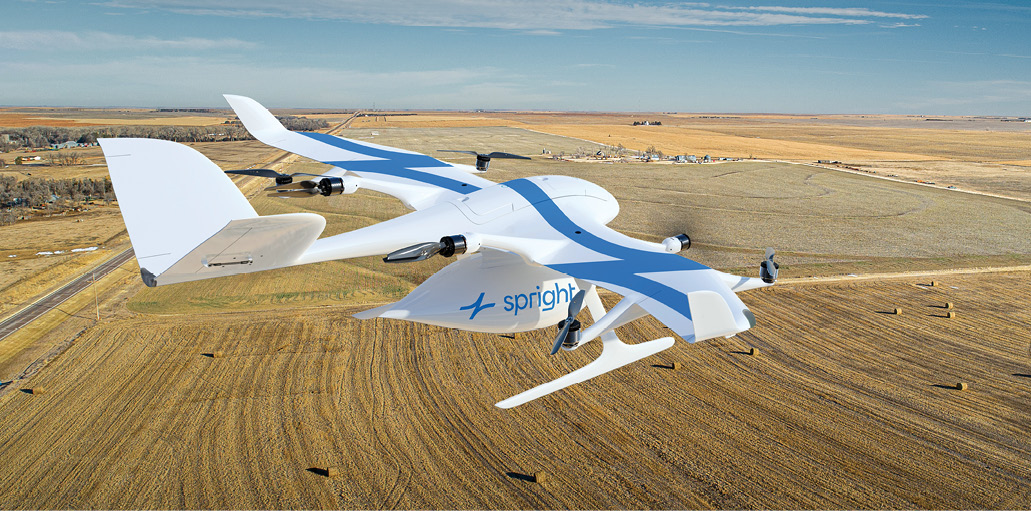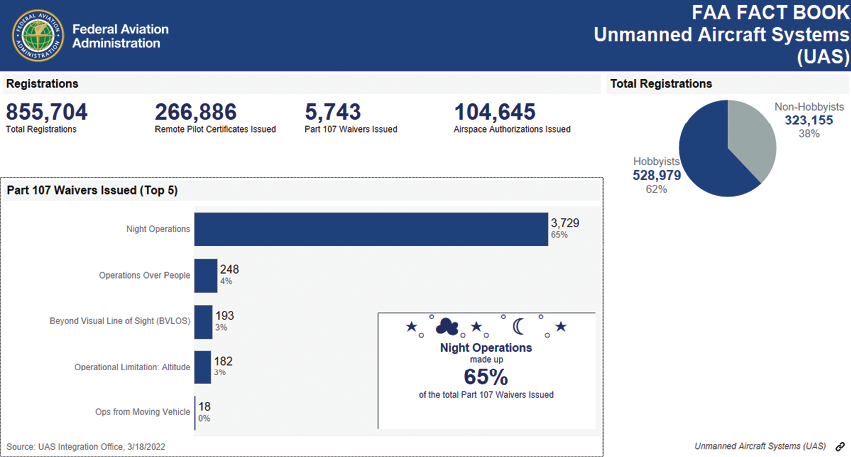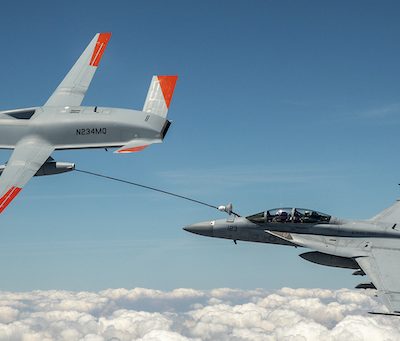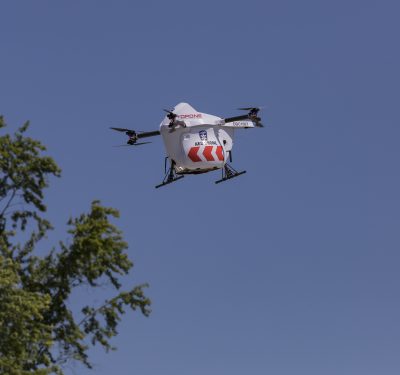
Inside Unmanned Systems submitted questions to the FAA about beyond visual line of sight flights, pending rulemaking and the impact BVLOS will have on the industry. The agency responded via email.
IUS: When should we expect a rule on BVLOS?
FAA: The FAA is developing a standard set of rules for operations beyond visual line of sight (BVLOS) to make these kinds of operations routine, scalable and economically viable. The agency chartered the Beyond Visual Line of Sight Aviation Rulemaking Committee on June 9, 2021, to provide safety recommendations to the FAA. We are currently reviewing their final report.
IUS: Are you anticipating a growing wave of waiver requests from industry for BVLOS flights?
FAA: As the FAA and industry more fully understand the capabilities and limitations of drones and the mitigations necessary to conduct safe drone operations, we expect waiver requests to increase.
IUS: The ARC called for a “scalable” BVLOS plan. How do you see that unfolding?
FAA: We are currently reviewing the ARC’s final report.
IUS: Specific to the ARC Safety Subgroup’s findings and principles, how is the public’s risk tolerance evolving and how does that inform/impact regulation?
FAA: After receiving the ARC’s recommendations, the FAA hosted two public listening sessions to solicit additional feedback. As the rulemaking process progresses, the public will again have an opportunity to comment on the Notice of Proposed Rulemaking (NPRM).
IUS: We are not quite halfway through the BEYOND program. What data sets are you getting? What are you learning? Is BVLOS and other demonstration data being shared, and if not, will it be?
FAA: The BEYOND program collects a wide range of data from its participants. This includes data on flights, aircraft, anomalies, maintenance, community engagement activities, societal and economic impacts and other information. The program shares data with FAA stakeholders, which helps inform policy, rulemaking and decision-making efforts.
IUS: Are you satisfied with the amount of data you’re getting back, and how will that data feed into the rulemaking process?
FAA: The participants of the BEYOND program provide data to the FAA. As rulemaking efforts progress, BEYOND will share relevant data where appropriate.
IUS: What’s beyond BEYOND? Any idea on what the next steps will be, or will there no longer be a need for such a program?
FAA: BEYOND is set to conclude in 2024. The FAA has not made any decisions about what might occur once BEYOND concludes.
IUS: What is the role of the BVLOS corridors (in New York, Oklahoma, North Dakota and others) going forward?
FAA: The FAA’s long-term goal is to safely integrate drones into the National Airspace System rather than set aside separate airspace exclusively for drones. This approach is consistent with the FAA Modernization and Reform Act of 2012 and the FAA Extension, Safety, and Security Act of 2016. The 2016 Act directed the FAA, in conjunction with NASA, to continue developing a plan for Unmanned Aircraft System Traffic Management (UTM), which will assist in integration efforts.
IUS: Do you expect unmanned traffic management systems to be completely separate from crewed air traffic control, or will there be a juncture in the near future?
FAA: The FAA will support operations for drones operating in low altitude airspace with UTM.

IUS: What need do you foresee for advanced training as BVLOS advances?
FAA: The FAA is focused on developing a standard set of rules for operations beyond visual line of sight to make these kinds of operations routine, scalable and economically viable. The agency chartered the Beyond Visual Line of Sight Aviation Rulemaking Committee on June 9, 2021, to provide safety recommendations to the FAA. We are currently reviewing their final report.
IUS: How are you coordinating with international regulatory bodies, such as EASA (the European Union Aviation Safety Administration), in developing BVLOS rules?
FAA: The FAA is committed to demonstrating its global leadership through active engagement with a wide variety of international stakeholders. We share information, best practices, and apply integration and operational lessons learned with the Joint Authorities for Rulemaking on Unmanned Systems, the International Civil Aviation Organization, regional regulatory bodies, and other civil aviation authorities like EASA and air navigation service providers.
IUS: What message would you like to convey to the unmanned systems industry and the broader marketplace as the BVLOS rules develop?
FAA: The FAA has a long, successful history of safely bringing new technologies into aviation. We are committed to safely integrating drones and Advanced Air Mobility aircraft into the National Airspace System, in line with FAA safety standards.






